Growth is China's solution
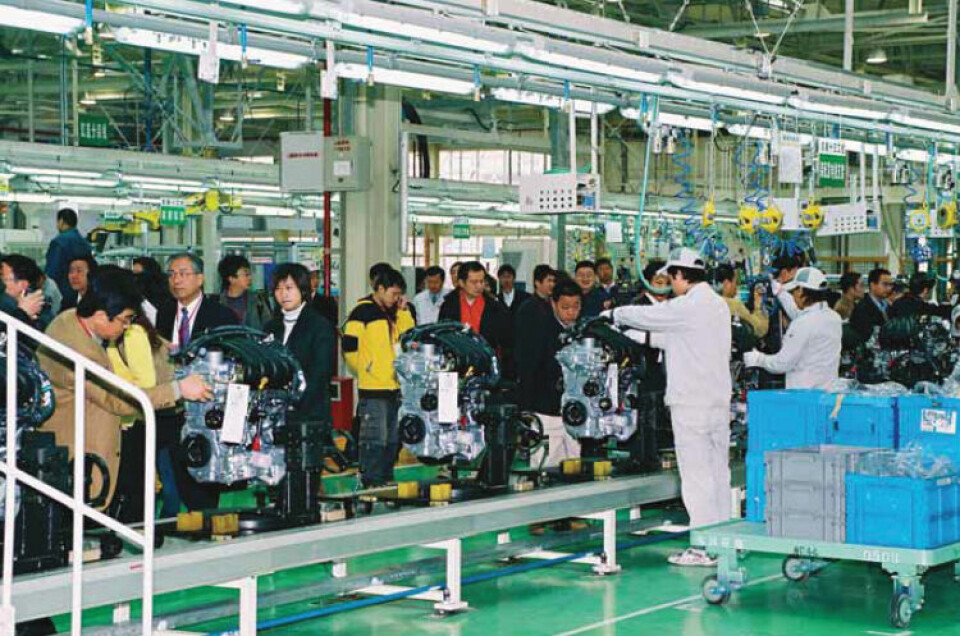
How the key players in China’s automotive industry are planning to increase vehicle production, the role of the Chinese government in the expansion programmes, and the push to promote electric vehicles.
Derided for years by critics in the West, China’s centrally-planned economy is arguably one of the main reasons why the country managed to come through the world economic downturn almost unscathed. For carmakers operating in China, sales incentive packages have led to record vehicle sales, which have in turn have led to a production plant building boom.
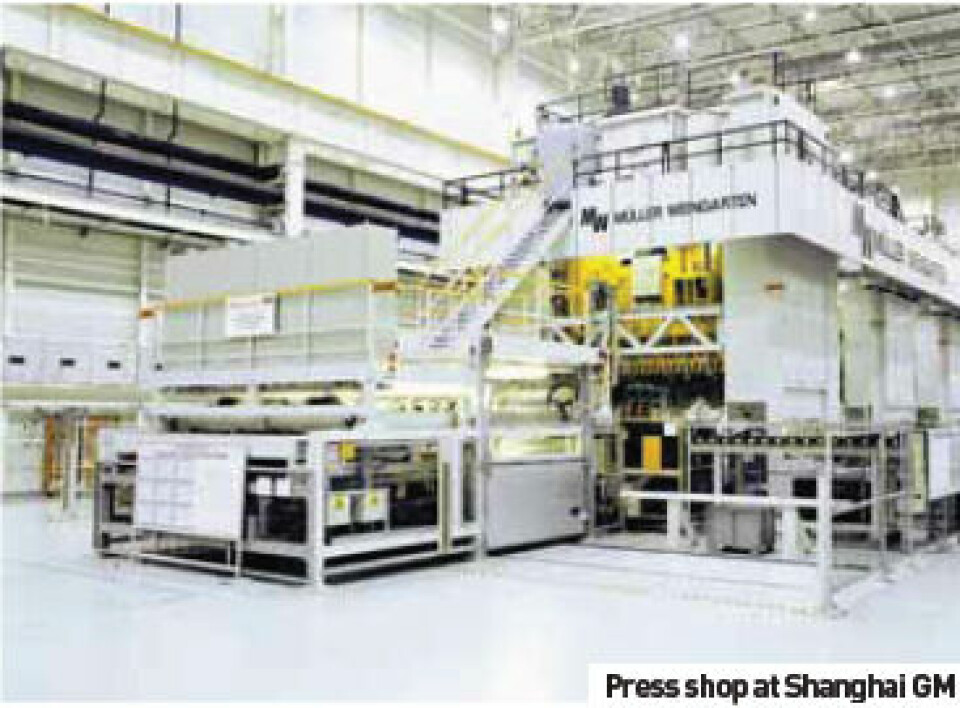
In early 2009, as the vehicle markets in the US, Europe and Russia went into freefall, the State Council of China’s Communist Party announced a stimulus plan that it hoped would spare the country’s vehicle manufacturers a similar fate. It succeeded even beyond the Party’s original intentions, with China eclipsing the United States as the world’s largest market for new vehicle sales in the first half of 2010. However, there were conditions. By the end of 2011, the State Council expects 40% of all vehicles sold to be powered by engines of less than 1,500cc, of which 15% must have a capacity of less than 1,000cc. By happy coincidence, that greatly favours the two big government-controlled firms, First Automobile Works (FAW) and Shanghai Auto (SAIC). The Beijing government has made no secret of the fact that it wishes to see two or three national champions, each with an annual capacity of up to three million vehicles, with a further group of four to five companies each producing between one and two million units. Those numbers look ever more believable. In August, the China Association of Auto Manufacturers (CAAM) increased its 2010 sales forecast to 16 million vehicles (up from 15m). With another eye on the future, the government is now actively encouraging existing state or privately-controlled Chinese OEMs to create or expand new brands. This is expected to stimulate exports, while pushing inefficient manufacturers towards higher-quality products – and break the reliance on foreign-partner technology.

Joint ventures back indigenous brands
The moves by the Beijing authorities to entice domestic OEMs to modernise and consolidate come as the market begins to mature. The era of volume-first manufacturing and sales targets is ending and with it, some of the more strict directives that have been part and parcel of China’s command economy.
With the exception of one Honda operation that produces export-only cars independently from its other two in-country partnerships with state-owned vehicle manufacturers, foreign OEMs are required to operate as joint ventures. Further, according to a law established in 1994, foreign-denominated vehicle makers must not own more than 50% of any manufacturing JV.
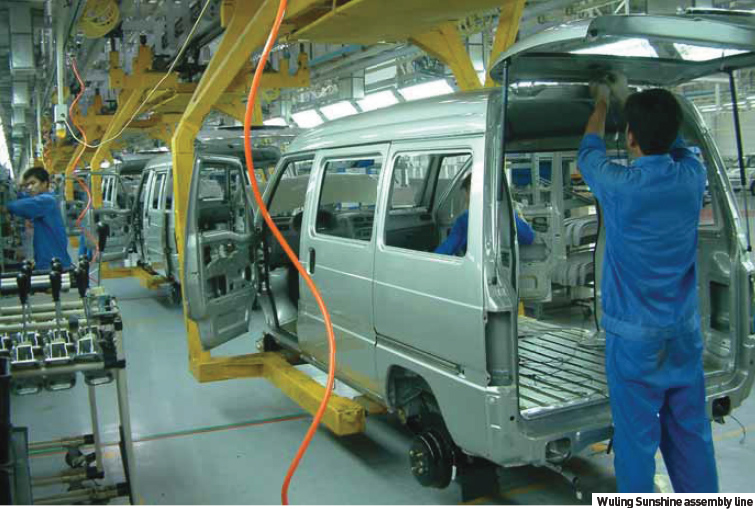
About two years ago, state-owned operators such as Guangzhou Auto and Dongfeng Motor realized there was a danger of being left behind in the race for new consumers. To avoid being marginalized, they began to press partners such as Nissan, PSA Peugeot Citroën, Honda and Toyota to provide vehicle platforms and marketing know-how for these own-brand model ranges. Earlier this year, several indigenous makers revealed prototypes based on this technology at the Beijing Motor Show, with some of these cars expected to be on the market by the end of 2010. Often, plans for new brands are made with an eye on export markets for the future; after a series of false starts, this will surely be the next phase of Chinese OEM growth plans. For that to happen on a large scale, Chinese car companies will have to invest even more in advanced R&D operations, or else risk a future of supplying the low-margin end of the market.
Domestic dangers
The brief sales slowdown in early 2009 which prompted the Beijing government’s stimulus package has been largely forgotten, as too has the fact that it brought the market close to overheating. That danger remains, especially as production expansion continues to be largely funded not by shareholders but via lending from the provincial governments that control many of the middleweight OEMs. Other problems may be building into 2011 and beyond. The majority of new vehicle registrations over the last 12 to 24 months have been for low-priced micro-minivans such as the Wuling Sunshine. Most analysts believe profits from such vehicles, which typically double as family transport and goods movers for small businesses, are typically less than 10%. For Western OEMs and their joint venture partners, 2011 is expected to bring a slight slowdown in the breakneck growth of 2010, to be followed by a new phase for the Chinese market – maturity.
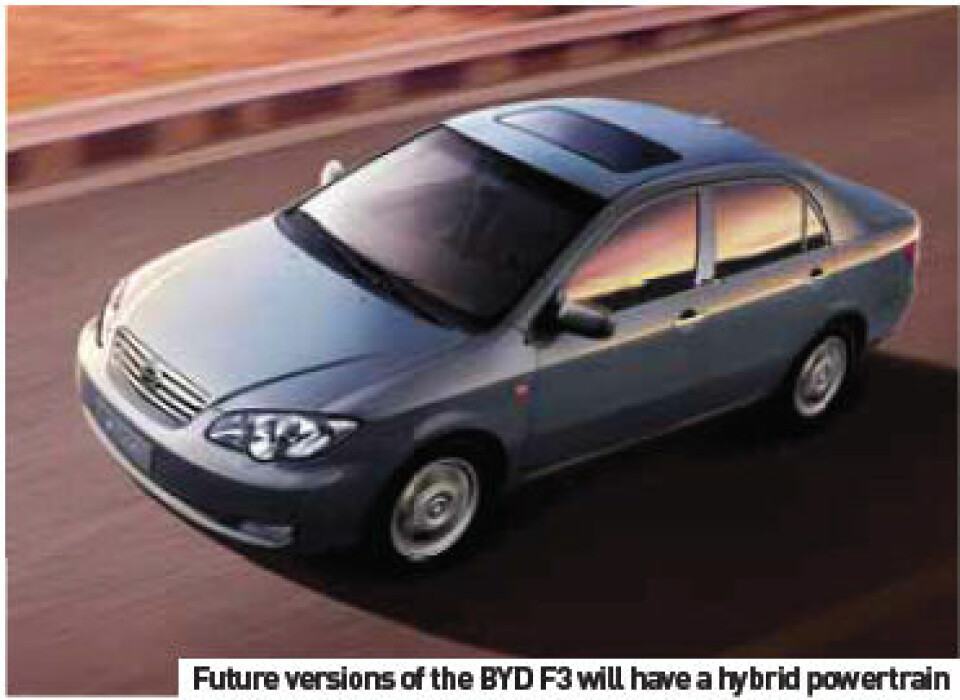
Volkswagen Group: China’s number one . The Volkswagen Group, which in 2008 became the first foreign manufacturer to sell more than one million cars in China in a single year, operates two joint ventures: FAW Volkswagen in Changchun and Chengdu and Shanghai Volkswagen in Anting, on the outskirts of Shanghai. Each is a 50/50 partnership with a state-controlled OEM. The group also builds Audi models as part of the FAW venture and Škodas with SAIC, the Shanghai-based manufacturing partner.
At a group level, Volkswagen stated in 2009 that it planned to double sales in China to over two million units a year by 2018. To promote such growth, VW would add or update at least four models each year over the next decade, double the number of dealerships and increase production capacity. However, such has been the group’s success that VW China has dramatically raised its targets.

"China has become the Volkswagen Group's largest and most important sales market,” stated Martin Winterkorn, Chairman of the Management Board of Volkswagen AG, in August 2010. “We intend to continue above-average growth side by side with our partners. With our unprecedented investment program, we intend to double our capacities in China to three million vehicles per year by 2013-14." Winterkorn was speaking at an event to mark the signing of contracts for the construction of Volkswagen China’s tenth and FAW Volkswagen’s sixth plant. The new facility, which will eventually employ 4,000 workers, is to be erected in Foshan, in the southern region of Guangdong, near the metropolis of Guangzhou.
Due to be up and running in mid-2013, the 170-hectare Foshan complex will include a complete production facility with press, body, paint and assembly lines. Maximum annual production capacity is expected to reach 300,000 units. VW China says the €520m facility is being funded in its entirety from the cash flow of FAW Volkswagen.
Unusual among domestic carmakers for being located off the Chinese mainland, FAW HaiMa Automobile manufactures a variety of Mazdabased cars at its main plant in the city of Haikou on Hainan Island. HaiMa is an interesting example of the ongoing reinvention of Chinese state-controlled vehicle makers. The company originally had a joint venture with Mazda, but the joint-venture was terminated after FAW took control of HaiMa. Now, the company uses older Mazda platforms as the basis for its current range, while it is also planning new vehicles, such as the forthcoming M1 small car and Z1 minivan, still using Mazda-designed architectures.
HaiMa, in the midst of a major expansion programme, is concentrating on the lower-medium and small car sectors, as dictated by its parent, FAW. The group’s third plant in Hainan is presently under construction. Upon completion of this facility, HaiMa’s annual capacity will double to 300,000upa.
FAW HaiMa Hainan plant operations
The main Hainan plant builds several models, each of which is based on the Mazda Familia platform. The facility includes a 2,000-ton ISI automatic stamping operation with an automated de-coiling and cutting line sourced from Sundwig in Germany and a destacker turnover machine shipped in from Atlas in the United States. Taiwanese suppliers Chin Fong and DEES supplied the plant’s blanking line and die spotting press respectively.
The spot welding robots at HaiMa’s largest facility are ABB units, while ARO servo electric blowtorches and an EDAG laser welding system are also used. The company boasts that its on-line fl exible laser inspection system, supplied by Canada’s LMI, was the fi rst of its kind to be introduced in Chinese automobile manufacturing.
Sanshin pre-treatment and Hyward E-coat line equipment features in the paint shop, with sealants supplied by Graco. The mid-coating line and surface coating line equipment comes from Dürr, the shop’s 12 spraying robots from ABB and Graco supplies the recirculation system. Heat supply equipment for the ovens comes from Canada’s ComEnCo and the combustion units and control systems are sourced from Maxon in the United States.
For the present, it seems the Volkswagen Group’s position of top OEM in China is secure. By the end of 2010, it will have launched seven new or modified locally-produced models. By 2012, that total will reach more than 20 new models. The production of electric cars is also set to start in China in 2013, with the Shanghai-built Lavida blue-emotion due to be VW China’s first plug-in car.
General Motors
While Volkswagen has long thought of itself as the leading automotive group in China, GM also lays claim to the title, largely due to production and sales from a venture in which it is a minority shareholder. Established in 2002, SAIC GM Wuling Automobile Company (‘Wuling’) is a joint-venture between General Motors China, Shanghai Automotive Industry Corporation (SAIC) and Liuzhou Wuling Automotive Company. GM China holds a 34% stake, SAIC 50.1% and Wuling Motors 15.9%.
Wuling’s most popular product by far is the Sunshine, a small passenger van, with local sales topping 500,000 units per year. In the first half of 2010, the Sunshine was not only China’s best-selling vehicle but also the world’s most popular vehicle. The key to the Sunshine’s success has been its appeal to families and small businesses, as well as its low price. To build on the success of the Sunshine and its related - and newer - Hong Tu derivative, Wuling is developing three new van models, two of which will be sized larger than the Sunshine. As for where all these new and existing models will be built, the three-partner venture has three facilities: West Plant and East Plant in Liuzhou, a southwestern Chinese province of Guangxi, and the Qingdao plant in the eastern province of Shandong. These have capacities of 400,000, 200,000 and 300,000upa respectively.
General Motors China has one other passenger car JV, Shanghai GM. This is a 50/50 venture between SAIC and GM building the majority of locally-sold Chevrolet and Buick vehicles, including small saloons such as the Chevrolet New Sail and Cruze, and the Buick Excelle. The Excelle is scheduled to enter production in Poland and the United States from early 2011, as the Opel Astra saloon and Buick Verano.
Guangzhou Automobile
Guangzhou Auto, a state-owned joint venture partner of both Toyota and Honda, and a future partner of Fiat Group, announced in 2008 that it would invest RMB6.8bn to launch its own brand of passenger vehicles. Each of these cars, to be sold under the Li Nian brand name, will use powertrains developed in-house.
The company plans to build a full range of passenger vehicles, with the first scheduled to be brought to market in late 2010, built at the rate of 100,000upa at a new plant in Guangzhou's Payu district, the location of its joint venture with Toyota. The site has a total area of 1.5m square metres, with 80% of the land for production and the rest for R&D. Guangzhou Auto has stated that it intends to double manufacturing capacity in the medium term.
BYD
Started in 1995 as a battery manufacturer, privately-owned BYD only began manufacturing cars in 2003. In 2010, it plans to build approximately 600,000 cars; future plans see the company becoming nothing less than China’s largest car manufacturer by 2020 - a goal its chairman, Wang Chuanfu, has announced on several occasions.
In August 2010, the Chinese government revealed plans for a RMB100bn ($15bn) fund aimed at encouraging the development and manufacture of low- or zero-emissions vehicles.
The Communist Party has reportedly told OEMs operating in the country that it wishes to see one million plug-in hybrids, electric vehicles and other alternative-energy vehicles on the road by 2020. The ambitious scheme is to be administered by the Ministry of Industry and Information Technology (MIIT) in Beijing.
Of the total amount available to manufacturers over the next decade, RMB50bn will be for the development and commercialization of what MIIT terms ‘fuel-effi cient’ powertrains; with a further RMB30bn set aside for R&D projects. RMB5bn will be set aside to build infrastructure in cities selected for EV pilot programmes.
Following on from its earlier plans to stand behind selected national champions, the Beijing government will provide what it considers to be the necessary fi nancial support for three vehicle manufacturers, as well as two or three battery and electric motor Tier suppliers. News of the proposed industry subsidy offers the most compelling evidence yet of the Beijing government moving aggressively to create an EV industry. This follows the mid-2010 creation of a pilot programme in fi ve domestic cities – Shanghai, Changchun, Hefei, Hangzhou and Shenzhen – to subsidize the purchase of electric and plug-in hybrid cars.
Under the scheme, buyers would receive up to RMB50,000 for purchasing a plug-in hybrid car such as the Chevrolet Volt or forthcoming Toyota Prius PHV, while those choosing a pure EV (e.g. Nissan Leaf, BYD e6), would be eligible for incentives totalling RMB60,000.
Like many Chinese OEMs, Shenzhen-based and Hong Kong-listed BYD has a track record of making bold, yet unfulfilled predictions, but unlike many rivals the company has a good track record of steadily rising sales. Its reputation was boosted enormously in September 2008 when American investor Warren Buffet took a 10% holding in the firm. BYD also gained much positive publicity when it unveiled the first Chinese-brand plug-in electric-gasoline hybrid car in December 2008, the Toyota Corolla-sized F3DM.
The company’s latest production expansion project involves construction of a new manufacturing facility in the northwestern city of Xi’an. This plant, which is to have an eventual capacity of 400,000upa, joins an existing facility in the same city. Both the existing Xi’an plant and another factory in the southern city of Shenzhen are capable of making 200,000 vehicles a year.
A new engine plant with maximum annual output of 600,000 units is also being erected in Xi'an. Total investment in these facilities is estimated to be about RMB5bn. Once operational, BYD’s car production capacity in Xi'an will total 500,000 units by 2012 and 600,000 in 2013. According to BYD, the new plant will build models codenamed F2, L3, F5 and M3.
Geely Automobile
Geely, China's largest privately-owned OEM, is unusual in that it lacks a major joint venture with any foreign automotive manufacturer. The firm, which finalised a deal to buy Volvo Car Corporation (VCC) from Ford in August 2010, has over the last decade evolved from a modestly-sized manufacturer of inexpensive, entry-level cars, into what will soon be a full-range carmaker.
Geely says it plans to increase annual production capacity in China to 1.7m vehicles by 2015, that from the current 300,000-400,000. While he insists that VCC and Geely will not be merged, the group’s energetic chairman, Li Shufu, has made no secret of the fact that he hopes to soon see Volvo models built at a Geely plant in China. Currently, small numbers of the Volvo S40 and S80 L are assembled by Ford’s JV partner, Changan.
Having announced that it plans to exit the lowest price sector (sub RMB40,000) of the Chinese market, Geely has since revealed its Panda small car as the first product to come from the new ‘Gleagle’ (Global Eagle) division. Two other new brands were announced at the Shanghai Motor Show in April 2009: Emgrand (Dihao in Chinese) producing a range of upmarket models and Englon (Yinglun in Chinese), for derivatives of its built-under-license Manganese Bronze TX4 taxi, with each having bespoke marketing and distribution networks.
Geely sold a total of 326,710 cars in 2009, up 60% over 2008, raising its share of the Chinese market to over 4%. Despite two new plants coming on stream (Chengdu and Jinan) in 2010, the company, unlike its rivals, is taking a cautious approach to sales projections, stating recently that it hopes to sell some 400,000 cars in 2010 (not including Volvo).
Chery Auto
Chery also has plans to become China’s largest OEM, but with only a fraction more than 300,000 vehicles sold in the first half of 2010, it has a long way to go. Nevertheless, the company has an ambitious future model programme that it hopes will transform it from a manufacturer of rebodied former Daewoos and SEATs into a large manufacturer in its own right.
The firm, which is owned by the provincial government of Anhui, has come a long way since its creation in March 1997. In August 2007, it became the first domestic automotive manufacturer to produce one million units. The key to much of Chery’s success has been the QQ series. In the home market, the model is extremely cheap and it has also found favour in countries where emissions and crash laws are not at the high levels of North America and Europe.
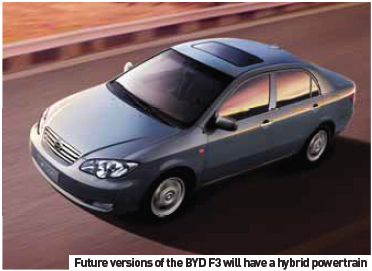
A change in strategy has lately become apparent, in part evidenced by the cancellation of agreed vehicle supply deals with first Fiat and then Chrysler. Launch dates for Chery’s own new models have been pushed back as a drive for better build quality gathers pace. Chery is also co-operating with more global suppliers, such as ArvinMeritor and Continental, in order to source higher-quality components. One of the company’s more interesting foreign endeavours is with state-controlled Iran Khodro (IKCO). The project, though, is on hold, as Chinese banks have reduced co-operation with their counterparts in the Islamic Republic, following US pressure related to Iranian nuclear plans. In another emerging-market joint venture, Chery has an agreement with Thai Chery Yarnyon to assemble SKD packs of Chery vehicles in Thailand. The initial model range will consist of the QQ and the Tiggo crossover, with exports to other regional markets. Chery has also partnered with Malaysian company Chery Alado Holdings to set up an assembly line at Oriental Assembler’s production plant in Johor, to produce the Tiggo and V5 minivan. Chery is also expanding production in its home market. In September 2009, in co-operation with the municipality of Dalian, a coastal city in northeastern China, the company broke ground for a new RMB4.7bn car plant. Built on 1.2km² of reclaimed land within Dalian’s free-trade zone (bonded zone), this will be the city’s first vehicle plant, and Chery’s first Chinese factory outside its home city of Wuhu. Production is expected to start in late-2011 and could reach a maximum of 200,000upa.
Great Wall Motor
Great Wall Motor (GWM) is one of the largest producers of pickups and SUVs in China. The firm, based about 100 miles from Beijing in the city of Baoding is, like Geely, an independent, with shares listed on the Hong Kong Stock Exchange. Great Wall is the only carmaker in the world to have a female president, Wang Fengying.
Like many of its rivals, GWM sells a minor quantity of vehicles in some European markets, including Russia and Italy, the most popular models being the Wingle LCV pickup and Hover SUV. The company, though, is planning to increase its European exposure; an assault on the markets in central and eastern Europe will be conducted via a new Bulgarian production plant which, it bears mentioning, is located within the European Union.
Under the contract, Great Wall Motor is to build a 50,000upa assembly plant in the Bulgarian city of Lovech, about 170km northeast of Sofia. Four models are scheduled for local production, including an SUV, pickup and two saloons, each of which has reportedly gained European type approval. Joining GWM’s existing global network of CKD and SKD facilities in Vietnam, Iran, Indonesia and Russia, the first vehicles are scheduled to roll off the production line in 2011.
While GWM continues to look outside China for growth opportunities, it is also about to commence on a new phase of expansion at home, the company having recently announced plans for the construction of a new plant in the city of Tianjin. According to president Wang, who in May attended a signing ceremony at the site, GWM will produce up to 300,000upa at the new location. The RMB4.2bn facility, which will build small cars and SUVs, will be a full production plant, with press, weld, paint, assembly and testing facilities.


